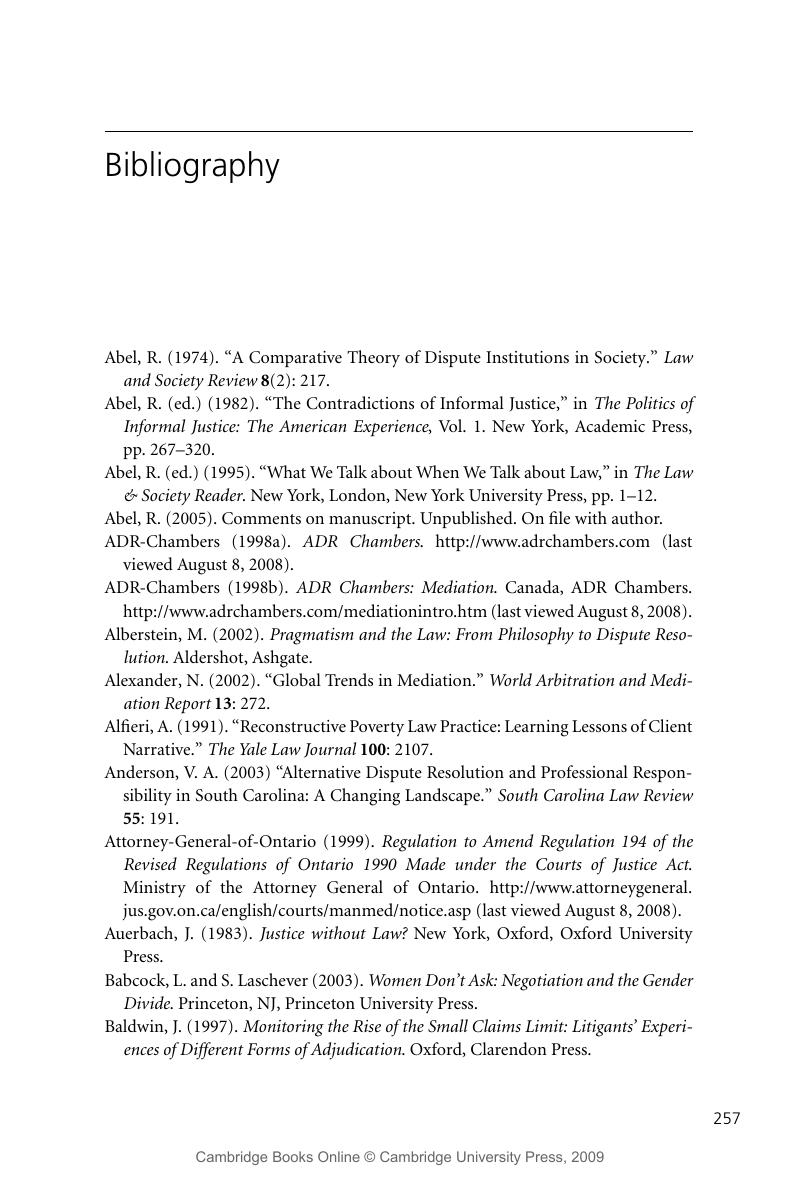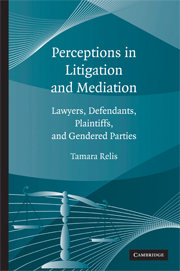Book contents
- Frontmatter
- Contents
- List of tables
- List of figures
- List of abbreviations
- Acknowledgments
- 1 Introduction
- 2 Great misconceptions or disparate perceptions of plaintiffs' litigation aims?
- 3 The voluntary versus mandatory mediation divide
- 4 Consequences of power: Legal actors versus disputants on defendants' attendance at mediation
- 5 Actors' mediation objectives: How lawyers versus parties plan to resolve their cases short of trial
- 6 Perceptions during mediations
- 7 Parallel views on mediators and styles
- 8 Conclusion: The parallel understandings and perceptions in case processing and mediation
- Bibliography
- Index
- References
Bibliography
Published online by Cambridge University Press: 21 August 2009
- Frontmatter
- Contents
- List of tables
- List of figures
- List of abbreviations
- Acknowledgments
- 1 Introduction
- 2 Great misconceptions or disparate perceptions of plaintiffs' litigation aims?
- 3 The voluntary versus mandatory mediation divide
- 4 Consequences of power: Legal actors versus disputants on defendants' attendance at mediation
- 5 Actors' mediation objectives: How lawyers versus parties plan to resolve their cases short of trial
- 6 Perceptions during mediations
- 7 Parallel views on mediators and styles
- 8 Conclusion: The parallel understandings and perceptions in case processing and mediation
- Bibliography
- Index
- References
Summary

- Type
- Chapter
- Information
- Perceptions in Litigation and MediationLawyers, Defendants, Plaintiffs, and Gendered Parties, pp. 257 - 280Publisher: Cambridge University PressPrint publication year: 2009

